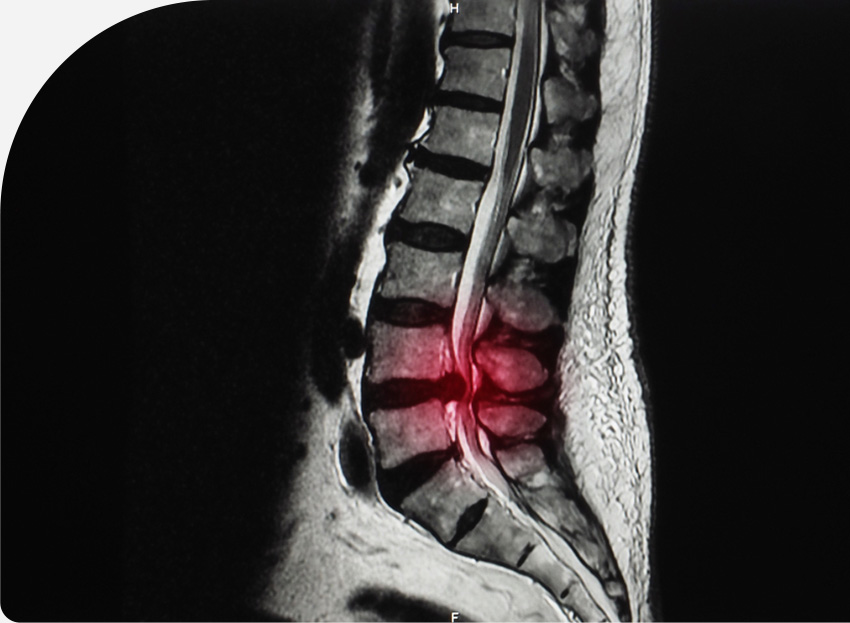When herniated discs, fractures, bone spurs, arthritis or other conditions cause pressure on the spinal cord and/or nerve roots, it can lead to symptoms like pain, tingling and weakness. For certain patients who haven’t experienced relief with more conservative measures, decompressive surgery may be the best course of action.
Decompressive surgery is a general term referring to a group of procedures that are performed to alleviate the chronic symptoms caused by the pressure, or compression. Read on to learn more about these procedures. Or, to find out if you’re a candidate for spinal decompression surgery in Long Island, schedule a consultation with Dr. Daniel Choi by calling us at (631) 730-7970.
Benefits of Decompressive Surgery
Provides Effective Pain Relief
Decompressive surgery relieves the pressure on the spinal cord and/or nerve roots and is extremely effective at eliminating the associated back pain or neck pain.
Restores Mobility
For patients who experience unsteadiness or weakness that causes difficulty standing and walking, surgery can combat these symptoms and improve mobility.
Treats a Range of Conditions
The procedures aim to eliminate the pressure caused by a variety of conditions, including spinal tumors, injuries, arthritis, degenerative changes, bone spurs, spinal stenosis, herniated discs and more.
Types of Decompressive Surgeries
At Spine Medicine & Surgery of Long Island, Dr. Choi and our team offer the following types of spinal decompressive surgery:
The laminectomy procedure is one of the most common types of back surgery. It’s highly effective for treating pain when conservative treatments have failed. When performing a laminectomy, our Long Island orthopaedic spine surgeon makes an incision in the treatment area. He then gently moves the muscle and soft tissue aside so he can access the spine. Finally, Dr. Choi removes any structures that are compressing the nerves, such as bone, bone spurs and ligaments.
This type of laminectomy procedure is performed to widen the spinal canal. By creating more room, the pressure on the spinal nerve or spinal cord is relieved. A cervical laminectomy and fusion is a common treatment option for cervical spinal stenosis.
During the procedure, which is performed under general anesthesia, Dr. Choi makes an incision at the center of the back of the neck in order to reach the cervical spine. He then removes a small portion of the lamina (the bony area that forms the roof of the spine).
In addition to the laminectomy, Dr. Choi may also do a fusion. This stabilizes the spine, reduces the chance of the symptoms recurring and wards off further compression. With a fusion, Dr. Choi places a bone graft to fuse together two or more vertebrae. If necessary, he also inserts metal plates and screws to keep the bones secure until you have healed.
Another procedure that can be done to relieve the compression of the spinal cord in the neck is a cervical laminoplasty. Dr. Choi accesses the spinal column by making an incision in the back of the neck. He then opens the spinal canal to relieve the pressure by making two incisions in the affected bone. In order to keep the area open, he places a bone graft or a small titanium plate.


Coflex™ Interspinous Device
As part of his commitment to offering cutting-edge, minimally invasive care, Dr. Choi offers a revolutionary alternative to spinal fusion following decompressive surgery: the coflex device.
Spinal fusion involves fusing together two or more vertebrae into one bone with metal rods or plates and screws. Since decompressive surgery can make the spine unstable, spinal fusion is commonly performed at the same time. While spinal fusion provides stability, it also prevents your spine from moving freely.
The FDA-approved coflex device is a titanium implant that gives you the stability you’d get with spinal fusion. However, it preserves your spinal flexibility and range of motion. Dr. Choi can use the same incision he made for your decompressive surgery in order to insert the implant. With the implant in place, you’ll be able to move naturally and continue to do your favorite activities.
Spinal Decompressive Surgery Recovery
Your recovery will depend on the type of decompressive surgery we perform. The procedures involve hospital stays of one to five days. Post-surgical back or neck pain is to be expected, but medication can help manage it. Your mobility will be impacted and you’ll have to limit your activity for several weeks. Physical therapy will likely be necessary following surgery. After a cervical laminectomy and fusion, you’ll also be given a cervical collar to wear for up to six weeks.
Less Pain, More Living
Find out how we can help you achieve freedom from pain. To get started, schedule a consultation with our Long Island spine surgeon today!



